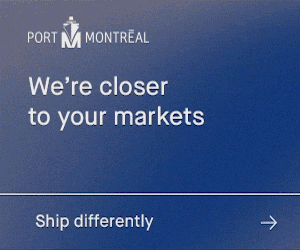
Xeneta believes long-term ocean freight rates may have started bottoming out after around a year of persistent, often dramatic monthly falls. The Oslo-based benchmarking and market analytics company says the latest General Rates Increases (GRIs) from carriers appear to have held “relatively firm”, pushing spot rates up above long-term rates on key corridors. As such, long-term prices may now follow suit and rally, meaning “now is the time” for cost-conscious shippers to assess strategies and negotiate new contracts.
Looking at the key Far East to North Europe trade lane, Xeneta’s real-time data shows that even through spot rates have fallen by around US$100 per FEU since early August’s GRIs, they are still around a third higher than prices in early July. This is in contrast to GRI moves earlier this year, which largely failed to influence a market hamstrung by weak demand and rampant overcapacity.
“This is a definite, eye-catching change,” commented Emily Stausbøll, a Xeneta analyst, “and shippers should view this as a bit of a wake-up call.”
Stausbøll says that cargo owners have become accustomed to falling rates and have therefore shifted volumes to the spot market, often delaying any moves to sign new long-term contracts. This is a “smart play” she says when spot prices are below contracted rates and seemingly locked into a downward trajectory.
However, Stausbøll warns, that market dynamics appear to be changing:
“Spot rates on this major trade lane now command a premium of around 20% over contracted rates, and this corridor is not an exception,” she noted, adding: “When spot rates start rising there’s usually a small lag and then long-term rates emulate them. If we look back to late 2019, the last time spot rates fell below long-term rates, GRIs in November helped push spot rates up and on 1 January 2020 long-term rates climbed by US$250 per FEU. That’s not to say the exact same thing will happen now, but it’s certainly a lesson shippers need to bear in mind.”
According to Xeneta’s data, a noteworthy development is already underway. Looking at average rates for long-term contracts signed within the past three months prices are still falling, standing at US$1,400 per FEU between the Far East and North Europe on 21 August. However, the data covering contracts signed within the last month show a slight increase, of US$30 per FEU. This is the first increase since April.
“This implies that contracted rates have bottomed out and, when we look at the spot rate development, could now be on the way up,” Stausbøll commented. “So, if you’re a savvy shipper looking to lock in volumes ahead of peak season at the best prices, why not negotiate new contracts now when the rates are low? It may just pay to ‘strike when the iron is hot’.”
In an illustration of the value available today, Xeneta’s data reveals that just a year ago contracted rates per FEU on this route stood at a ‘staggering’ US$9,100. By comparison, current rates of US$1,400 per FEU are “hugely advantageous” to lock in.
“It’s unrealistic for shippers to think rates will keep falling,” Stausbøll concludes, “especially when carriers are blanking sailings and working largely ‘as one’ to try and address the subdued levels of their all-important long-term rates. It’s too early to say if this is the watershed moment when the market turns, but it definitely represents a significant shift. It’ll be fascinating to keep watching the data and see how the market develops.”
Xeneta is an ocean and air freight rate benchmarking and market analytics platform transforming the shipping and logistics industry.








